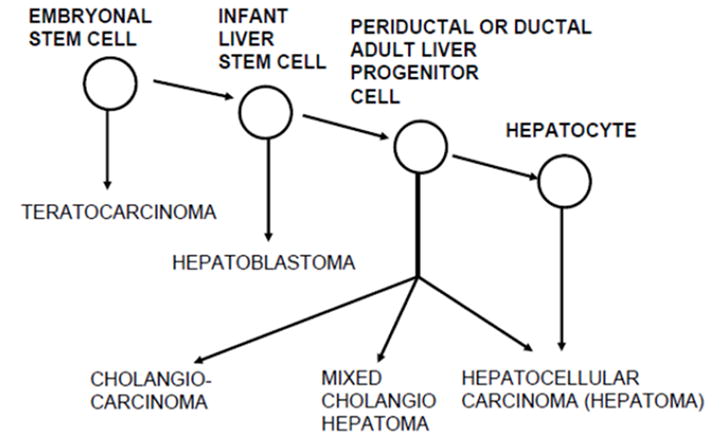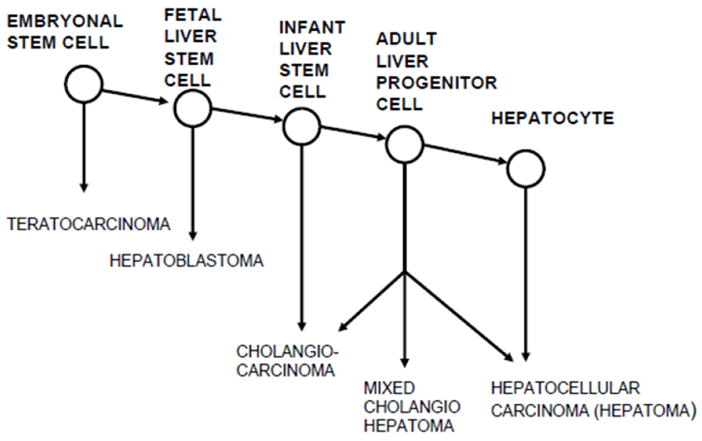Figure 1.


Figures 1A and 1B. Maturation arrest models of hepatocarcinogenesis. A. Experimental hepatocarcinogenesis in rats is explained by maturation arrest at the adult liver stem cell or hepatocyte level. The missing link to pluripotent stem cells is the postulated cell giving rise to hepatoblastoma. From reference 16. Figure 1B shows revised liver-cell lineage and maturation arrest model of hepatocarcinogenesis. We now postulate that in rats, between birth and 3 weeks of age, liver stem cells differentiate to a stage of bile duct determination, such that exposure to the cyclic CDE regimen results in induction of CCAs. Our model predicts that at a younger age, there still exists a more primitive liver determined stem cell that under appropriate conditions could give rise to hepatoblastomas.
